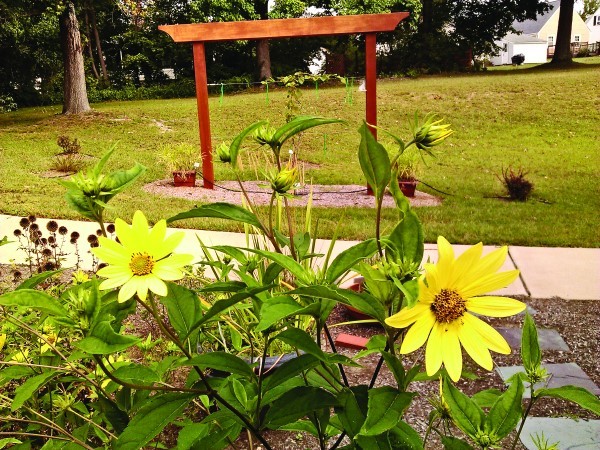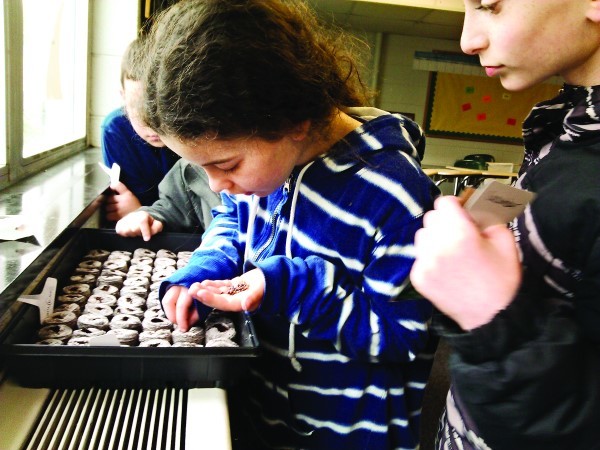Autumn in the biblical garden at Temple Sinai
BY
CRANSTON – Now, as we lose the warmth and light of the summer sun, there is an invigorating crispness in the air, we put on sweaters and, in the biblical garden at Temple Sinai, the growing season comes to an end. As we prepare the garden for the coming winter, we make note of what worked and what didn’t, and what changes we might make in the spring.
This season, the fig tree has yielded another modest crop of small and lovely figs. The two-year-old grape vine is now entwined on the cedar arbor, and has reached its full height. Next spring it should continue to make its way along two courses of wire that extend the width of the structure. Once they lose their leaves, the fig and the grape will be wrapped in burlap against bitter January winds.
The ancient grains have had mixed success: barley always yields its heads of grain, but the ancient strain of emmer wheat has failed to develop seed heads. Sorghum cane is now a spectacular 8 or 9 feet tall, and is laden with plumes of millet. With the start of a new religious school year, rosemary, lavender and sage will be harvested to fill spice boxes, and wild tulip bulbs will be planted in the still-warm earth. After the High Holy Days, it will be time to build a sukkah, and to clear away the withered leaves and stems that are the remains of summer’s abundance.
Our forebears in the biblical world reserved a portion of their crop to ensure adequate seed supply for the coming season. Because poor harvests came frequently, as often as one in every four seasons, it was necessary to grow and store surplus grain and foodstuffs to sustain the community in lean times. Activities in the biblical garden help students understand the concept of food insecurity, and explore issues of hunger and Jewish values in our own communities.
Religious school classes will reserve adequate seed stock for the next growing season in the biblical garden by harvesting seeds and restocking the seed basket. Students enjoy shaking pods of broad beans, nigella, cleome and poppy, listening for the rattle of the tiny miracles contained within. Lentils, grains, herbs and flaxseed are collected, deposited in bags and carefully labeled.
The seed basket will reappear in spring along with trays and peat pots filled with soil so students can begin to sow seeds and witness the germination of new plants. Planting a seed is an act of trust that these small, desiccated entities with their curious shapes will sprout new life, and grow and flourish with adequate water, light and earth. Collecting seeds in the fall, and planting them the following spring are simple activities that place our children and our gardens in the cycle of life and remind us that we are dependent on the abundance of nature to sustain us.
The biblical garden was established on the Temple Sinai grounds in the summer of 2010 with a three-fold purpose:
• As a living testament to our connection with Torah and the everyday lives of our forbears in ancient Israel, through sight and touch, taste and smell;
• To engage the Temple’s Religious School children in the cycle of planting and harvest;
• As an inviting oasis for rest, reflection and shalom.
The garden provides opportunities for teaching about how plant material was utilized in biblical communities, as food and fodder, as textiles, in construction, and in sacred ritual. For all who visit, it offers a seasonal display of shoshanim, wildflowers that flourished in ancient times and still today in Israel.
CATHERINE WALTERS tends the biblical garden at Temple Sinai. For more information, she can be reached at 401-419-7698 (margalit_rut@hotmail.com).











